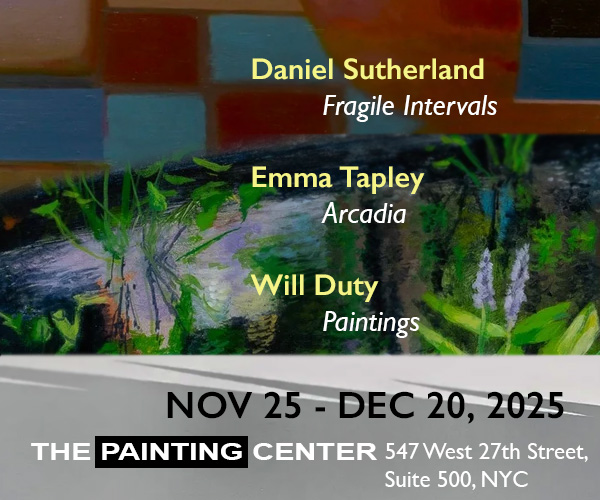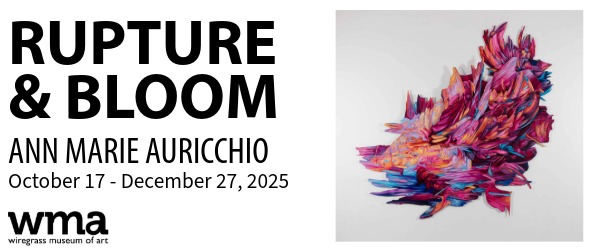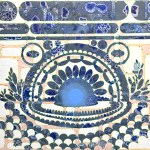
Contributed by Frank Webster / The High Arctic has always fascinated me. Since falling in love with Barry Lopez’s classic Arctic Dreams some two decades ago, I have dreamed of visiting the far north. So I was very excited to receive word that I had been accepted for the Arctic Circle expedition. A couple of pandemic postponements later, I finally was able to go on the voyage in June of 2022.
After a flight through Oslo and Tromsø I land in Longyearbyen in the Norwegian archipelago of Svalbard. A former coal-mining company town, Longyearbyen is the world’s northernmost settlement – the largest on the island of Spitsbergen, where it sits on the southern edge of the long inlet of Isfjorden. After checking into a mining barracks turned hotel called the Coal Miners’ Cabin in the satellite village of Nybyen, I attend a dinner and meeting with the other voyagers – a diverse international group of artists and scientists – at the nearby Spitsbergen Art Center. The next day we board the refurbished three-mast barquentine Antigua. The first night we anchor by the glacier Esmarkbreen in the bay of Ymerbukta. Glaciers are wonderful structures of great beauty and this one is about 5000 years old, collapsed on one side and twisted in dirty bundles that look as if they were conceived by H.R. Giger. Defining the geography of Spitsbergen are monumental glaciers – strange ice-cored elevations called pingos and glacially sharpened “pointed mountains.” (The name of the island comes from the Dutch words spits, meaning pointed, and bergen, meaning mountain, and was coined by Willem Barentsz when he discovered the archipelago in 1596.)
We set out for Esmarkbreen in zodiacs and spend a couple of hours exploring. After lunch on the ship we return to the same spot and I commence painting the glacier. So many compositions leap out of this landscape. My plan is to paint plein air here, weather permitting. I make three watercolor sketches and start to adapt to working in the cold.

The Antigua leaves Isfjorden for the open waters of the Forland Sound. Spectacular scenery abounds as I get my sea legs on deck. Anchoring in Dahlbukta, we take another zodiac ride in the morning and encounter our first bearded seals. In the afternoon we land on a small island facing the bright white and blue glacier of Dahlbreen. I set up for plein air and photography. Despite the impressive size of its terminus, this glacier shows clear signs of retreat. Svalbard is among the places most rapidly affected by anthropogenic climate change.
That evening we sail through the shallows between the long, narrow island of Prins Karls Forland and the main island of Spitsbergen, emerging in the rolling swell of the Arctic Ocean. These are the premier big waves of the passage to the north. By morning we are in the bay of Scheibukta, at the snout of another sweeping glacier, Scheibreen. We disembark with our zodiacs to a spot with a few seals. I paint for a couple of hours as the tide comes in and we are forced to return to the ship. I work on quick sketches on deck after lunch as we glide our way through the waters of Fairhaven to the bay of Fuglefjorden.
The rest of the afternoon is spent on a small islet at the bottom of the otherworldly glacier Svitjodbreen. I set up with my camera and pochade on the tiny island and paint as the monstrous ice calves around me. Bright aquamarine icebergs float by and split into thousands of jewel-like fragments with a sharp, crackling resonance. Ice in this place comes in a remarkably wide array of textures and colors. That night we encounter shards of pale, briny sea ice as we head towards the open sea again.

The following morning we trek up the ridge line over Hamiltonbukta – a small but stunning bay on the northwestern opening of Raudfjorden. It is great to finally go hiking here and to get a wide view above the glacier Hamiltonbreen. Air holes made by seals in the ice of the bay look like Queen Anne’s lace from overhead. In the far north of the island the spits are more apparent, resembling spiked steeples. On the way back a walrus circles our zodiac. Later in the afternoon we see a polar bear on the shore after days of finding sign and tracks. The bear is very far away but also very large.
I paint on the deck under the midnight sun. Sketching is working well for me and I am getting a deeper sense of the landscape by taking this approach – I perceive with greater sensitivity and I feel more meditative and connected to this environment. Moving ever northward, I see that we are now surrounded by sea ice.
The next day we enter Vesle Raudfjorden and take our zodiacs onto the ice floes and work on projects for a couple of hours until the ice starts to separate and we have to retire. The cliffs in this fjord feature a reddish sand and are distinct from other areas we have visited thus far. (Vesle Raudfjorden means “Little Red Fjord.”) The Antigua is sailing across the top of the island. Tiny huts are visible, relics of the days when Svalbard was known for its commercial hunting and trapping. Walrus skulls litter the beaches.



Slowly we move into Worsleyhamna at the top of the island on the east side of the flatlands of the Reindsdyrflya. The bay is placid with steel-gray waters and cloud-veiled slopes in the distance across the Liefdefjorden. Our landing is near a small hut named the Villa Oxford. There are polar bear and reindeer tracks everywhere but also many birds – ptarmigan and black-legged kittiwake with their distinctive vocalization.
Liefdefjorden – the Fjord of Love – is a frigid place with vast ice sheets and snow-capped mountains carved out by the monumental glaciers Monacobreen and Seligerbreen. These two glaciers were once connected at their terminus but have separated as they have retreated. The weather is calm and clear as we take zodiacs into the fjord through pale sea ice and recently calved bright cerulean icebergs. I am struck by the great variety of blues and grays in this polar landscape. Wildlife is abundant as well: there are ample seals, walruses and amazing hovering arctic terns, all curious about the peculiar outsiders.
I wake up to the singing of the bearded seals – an eerie sound like a dive-bombing teakettle. Their sonar song is uncanny as they play in the small bay of Hornbaekpollen where we have anchored. After a hike to the landlocked glacier of Erikbreen we see a female polar bear on a small spit of land in the bay. She is sleeping after gorging herself on bird’s eggs.

We are now on the northeastern-most leg of our journey. I paint for a couple of hours by a small hut at Eolusneset on Sorgfjorden – the Bay of Sorrow. There was a naval battle in the bay between the French and the Dutch in 1693 during the Nine Years’ War. Above me on a small hill are the graves of whalers buried under stone piles beneath a crude wooden cross. I try to imagine what it would be like to be buried in such a desolate place. What would happen to your bones as they scattered across the landscape? I imagine death as an extension of the body – of being beyond consciousness towards infinity. The landscape is the stuff of bones, hard and dry under the melting ice. Bones ground under the glacial moraine, clean and deconstructed. Birds regulate my expansion. My body is limitless on the wing, dropped miles away.
The landscape of the northeast flattens out and the mountains are ground down to low mesas or domes. Flat lichen plains compose the shoreline. Icebergs spread before us in delicate light blues and whites. The occasional piece of driftwood passes on its long trek from Siberia. In the afternoon we land in Sorgfjorden at Crozierpynten, the site of the joint Swedish-Russian Arc-of-Meridian expedition from the end of the nineteenth century. I work in my sketchbook for a couple of hours documenting a low mountain that dominates the landscape. The sky is clear and exceptionally bright. That evening we build a bonfire on the beach to celebrate the farthest point east of this voyage.

The following day we sail northwest past the hollow island of Moffen and reach international waters. Nothing stands between us and the North Pole except sea and ice.
The sun is shining when I awaken and see we are anchored in a small bay in Fairhaven with a glacier descending from the mountain Drottenfjellet. The water is very shallow and requires some skillful maneuvering on our way to shore. I paint two plein air studies under a glorious arctic sky. By afternoon, clouds have rolled in and we are sailing on rougher seas. I sketch on deck, trying to catch the drama of the changing weather.
The subsequent morning is spent on the massive glacier Blomstrandbreen, which is calving internally and making loud troll sounds. I hike up to the top of a ridge and sketch the backside of the ice on a moraine that has fragments of a petrified forest from some distant epoch. Remarkably, this ancient wood was carried up from the equator as these islands formed. Notwithstanding its grandeur, Blomstrandbreen too is retreating rapidly and has recently revealed the island Blomstrandhalvøya, believed to be a peninsula before the 1990s.
We are sailing south along Prins Karls Forland into Forland Sound. There are a large group of walruses lounging on a thin spit of land called Sarstangen at the bay of Sarbukta. Despite its size, the walrus is an agile swimmer. I marvel at their silky coats, ample blubber and yellow tusks protruding into the air. An enormous older male has large fleshy lumps on his neck and very little hair. These hyper-social animals roll over each other both on land and in the water. From a distance they appear to be one giant writhing Lovecraftian mass.

Our voyage takes a detour up Billefjorden to Pyramiden – an abandoned Soviet era old coal-mining settlement. I walk around the old socialist utopia where today reindeer and birds abound. The Antigua sails back through Isfjorden under wind power. In that moment I feel that nothing could be more magical. The water is choppy so there won’t be a landing. Instead, I sketch on deck and enjoy the spray. The Antigua anchors in Colesbukta and I make a final painting on the deck before gliding into the harbor of Adventfjorden.
We spend a couple of days in Longyearbyen to decompress. There is another dinner at the Spitsbergen Art Center and a hike on the Longyearbreen glacier in search of fossils, which we find in abundance. It’s solstice in the north and I spend it visiting the Svalbard Global Seed Vault. Longyearbyen was originally chosen as a location to preserve the world’s agricultural diversity because of its cold temperatures, but the permafrost has been melting and the vault must now be artificially refrigerated. There are gale-force winds and a bright sun. We spend the last evening in a boathouse on the fjord for dinner. As the winds calm down, we watch the Antigua sail away from the window. I consider what I will bring back from this extraordinary experience and how it will fit into to my life back on the Hudson River and in New York City.
——
About the author: Frank Webster is a painter who lives in Queens, NY. Webster received his BFA from the School of the Art Institute of Chicago and his MFA from the Mason Gross School of the Arts, Rutgers University. He also attended the Skowhegan School of Painting and Sculpture. Webster is the recipient of numerous awards including a Queens Arts Fund New Works Grant, the NYFA Fellowship in Painting, the Pollock Krasner and the Golden Foundation Individual Artist Award. He has shown in solo and group exhibitions in New York City, nationally and abroad. He has been awarded residencies at NES Artist Residency, The Marie Walsh Sharpe Space Program, Painting Space 122, Virginia Commonwealth University, The Ucross Foundation, The Corporation of Yaddo, The Ragdale Foundation and The MacDowell Colony among others. In June of 2022 he participated in the spring expedition of the Arctic Circle Residency.























Thank you for your wonderful description of the adventure you were able to partake of. I feel like I was there with you. Your artwork is amazing as usual. I hope to read more of your articles of future voyages.
Peter Gallinari
Your written descriptions are as poetic and delicate as your plein air ice paintings. I am à plein air painter so I marveled at your minimal plein air supplies. Your brushes look like they fold back into themselves, how practical to keep the brunch points protected; and what kind of painting blocks did you use?
Thank you in advance,
Pamela Casper
The landscapes are gorgeous; and so are your watercolors of them!
Really enjoyed reading this, Frank! Congratulations on a spectacular adventure and very strong new work!
Longing to be there.